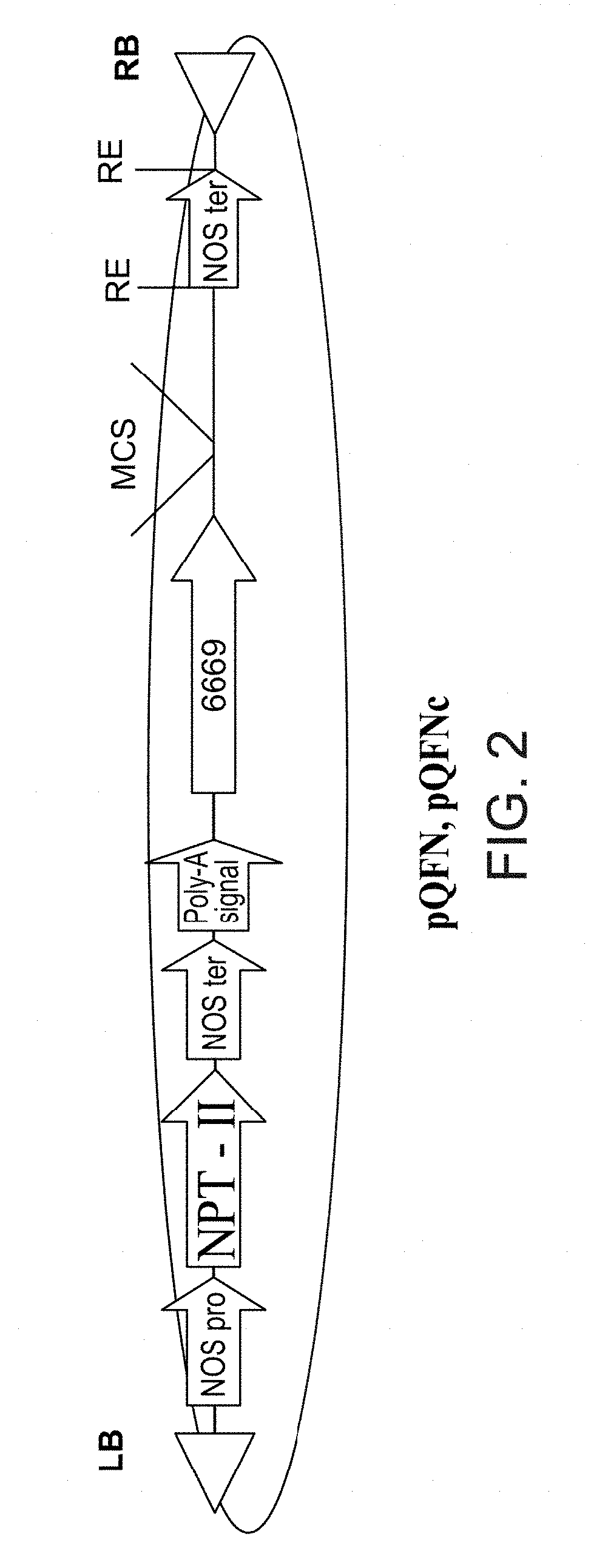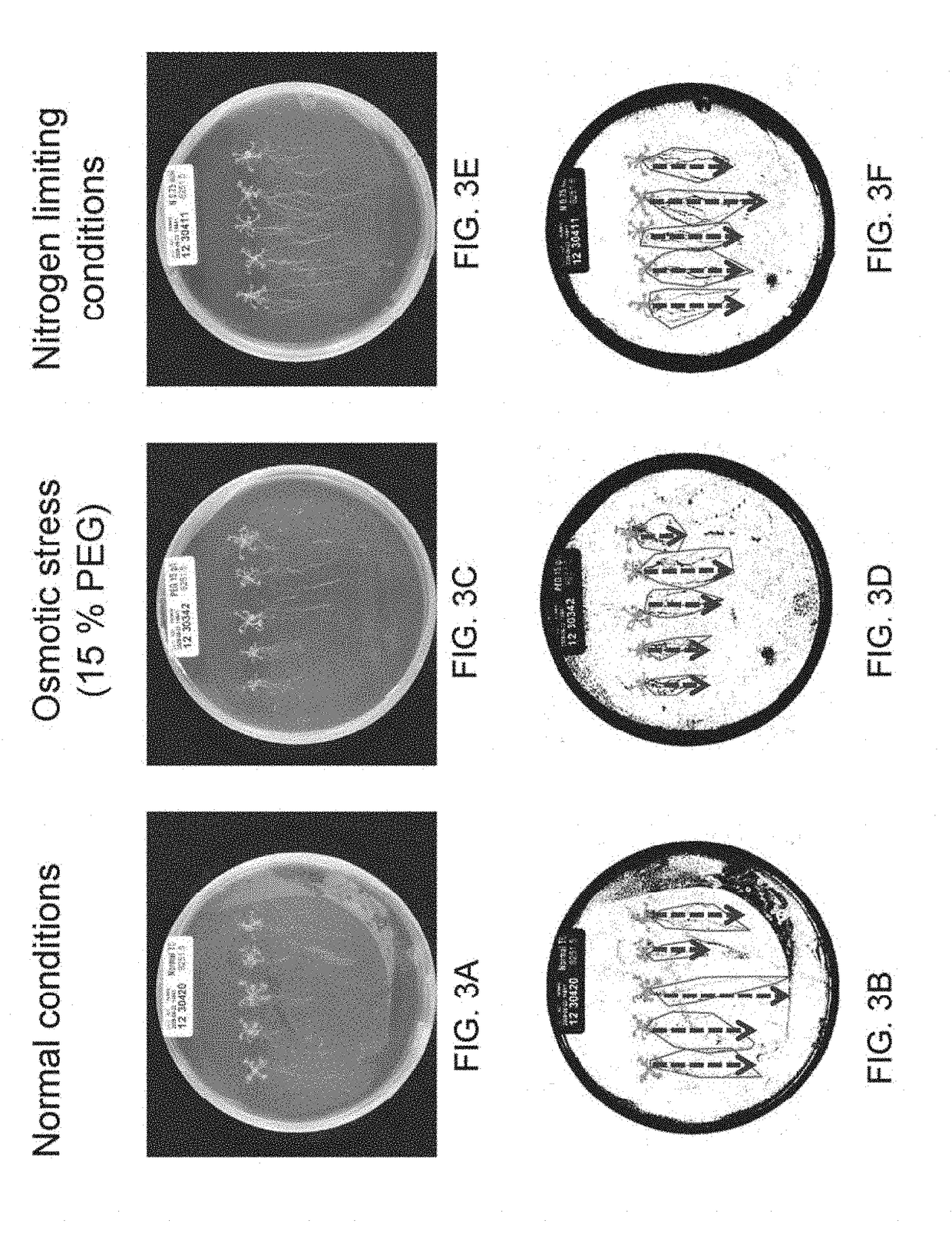Isolated polynucleotides and polypeptides, and methods of using same for increasing nitrogen use efficiency of plants
a technology which is applied in the field of isolated polynucleotides and polypeptides, can solve the problems of low nitrogen use efficiency, negative impact on the input cost of farmers, and inefficient use of fertilizers, etc., and achieves the effects of increasing the nitrogen use efficiency, abiotic stress tolerance, and yield
- Summary
- Abstract
- Description
- Claims
- Application Information
AI Technical Summary
Benefits of technology
Problems solved by technology
Method used
Image
Examples
example 1
Identifying Genes which Increase Nitrogen Use Efficiency (Nue), Fertilizer Use Efficiency (Fue), Yield, Growth Rate, Vigor, Biomass, Oil Content, Abiotic Stress Tolerance (Abst) and / or Water Use Efficiency (Wue) in Plants
[0520]The present inventors have identified polynucleotides which upregulation of expression thereof in plants increases nitrogen use efficiency (NUE), fertilizer use efficiency (FUE), yield (e.g., seed yield, oil yield, grain quantity and / or quality), growth rate, vigor, biomass, oil content, fiber yield, fiber quality, fiber length, abiotic stress tolerance (ABST) and / or water use efficiency (WUE) of a plant.
[0521]All nucleotide sequence datasets used here were originated from publicly available databases or from performing sequencing using the Solexa technology (e.g. Barley and Sorghum). Sequence data from 100 different plant species was introduced into a single, comprehensive database. Other information on gene expression, protein annotation, enzymes and pathway...
example 2
Identification of Homologous Sequences that Increase Nitrogen Use Efficiency, Fertilizer Use Efficiency, Yield, Growth Rate, Vigor, Biomass, Oil Content, Abiotic Stress Tolerance and / or Water Use Efficiency in Plants
[0536]The concepts of orthology and paralogy have recently been applied to functional characterizations and classifications on the scale of whole-genome comparisons. Orthologs and paralogs constitute two major types of homologs: The first evolved from a common ancestor by specialization, and the latter is related by duplication events. It is assumed that paralogs arising from ancient duplication events are likely to have diverged in function while true orthologs are more likely to retain identical function over evolutionary time.
[0537]To further investigate and identify putative orthologs of the genes affecting nitrogen use efficiency, fertilizer use efficiency, yield (e.g., seed yield, oil yield, grain quantity and / or quality), growth rate, vigor, biomass, oil content, ...
example 3
Production of Arabidopsis Transcriptome and High Throughput Correlation Analysis Using 44K Arabidopsis Oligonucleotide Micro-Array
[0552]In order to produce a high throughput correlation analysis comparing between plant phenotype and gene expression level, the present inventors utilized a Arabidopsis oligonucleotide micro-array, produced by Agilent Technologies [chem (dot) agilent (dot) com / Scripts / PDS (dot) asp?1Page=50879]. The array oligonucleotide represents about 44,000 Arabidopsis genes and transcripts. To define correlations between the levels of RNA expression with NUE, yield components or vigor related parameters various plant characteristics of 14 different Arabidopsis ecotypes were analyzed. Among them, ten ecotypes encompassing the observed variance were selected for RNA expression analysis. The correlation between the RNA levels and the characterized parameters was analyzed using Pearson correlation test [davidmlane (dot) com / hyperstat / A34739 (dot) html].
[0553]Experiment...
PUM
| Property | Measurement | Unit |
|---|---|---|
| weight | aaaaa | aaaaa |
| nucleic acid | aaaaa | aaaaa |
| abiotic stress tolerance | aaaaa | aaaaa |
Abstract
Description
Claims
Application Information
 Login to View More
Login to View More - R&D
- Intellectual Property
- Life Sciences
- Materials
- Tech Scout
- Unparalleled Data Quality
- Higher Quality Content
- 60% Fewer Hallucinations
Browse by: Latest US Patents, China's latest patents, Technical Efficacy Thesaurus, Application Domain, Technology Topic, Popular Technical Reports.
© 2025 PatSnap. All rights reserved.Legal|Privacy policy|Modern Slavery Act Transparency Statement|Sitemap|About US| Contact US: help@patsnap.com



